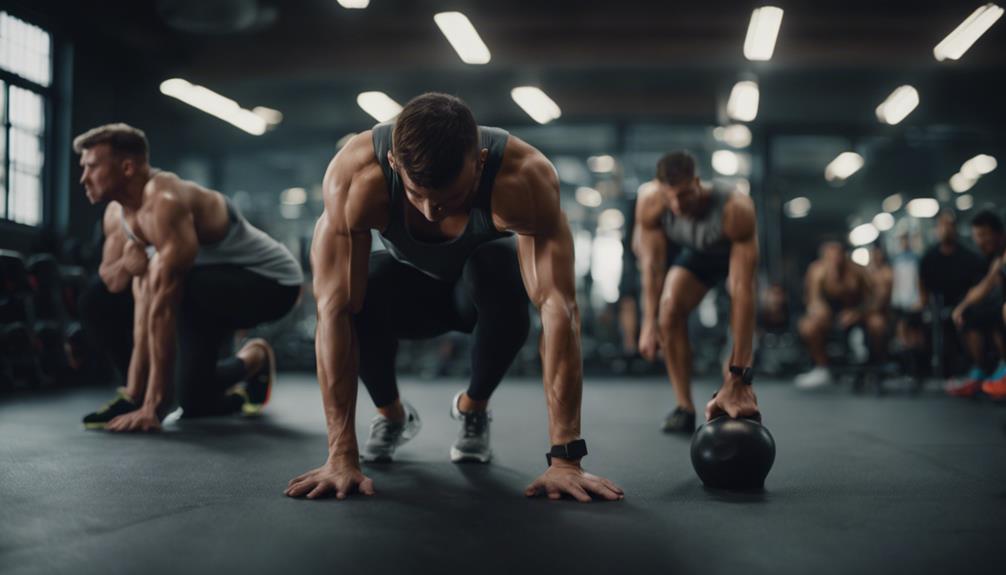When you engage in physical activity, you’re likely to notice a flush of color on your face. This common phenomenon, often referred to as facial flushing, raises questions about its underlying causes. Understanding why your face turns red during exercise can provide insight into your body’s physiological responses and help you approach your workouts with greater awareness.
Exercise induces a multitude of changes in your body, including alterations in blood flow, temperature regulation, and even hormonal responses. By diving into the science behind facial redness during physical activity, we can demystify this natural reaction and assess its implications for your fitness journey.Can You Put Parents On Your Health Insuranceis it ok to exercise with a sinus infection
Understanding the Body’s Response to Physical Activity
When you exercise, your body undergoes various physiological changes to meet the increased demands placed upon it. One of the most significant responses is increased blood flow to the muscles, which requires additional oxygen and nutrients. This higher demand for blood circulation results in the capillaries—tiny blood vessels near the surface of your skin—dilating to accommodate the influx of blood. As a result, more blood flows to your face, giving it that characteristic red hue.
Moreover, the body’s sympathetic nervous system kicks into gear during physical exertion, releasing adrenaline and other hormones. These hormones not only enhance your heart rate and energy production but also lead to vasodilation, further contributing to the reddening of your face. In essence, the redness is a visible indicator of your body working hard to support your physical activity.
The Role of Increased Blood Flow During Exercise
As you embark on a workout, your muscles require more oxygen, prompting your heart to pump faster and your blood vessels to expand. This increased blood flow is crucial for delivering nutrients and removing waste products from your muscles. While this heightened circulation enhances your overall performance, it also has a side effect: visible facial redness.
The increase in blood volume moving through the capillaries near the skin’s surface makes the skin appear flushed. In fact, this is a sign of your body’s efficiency in responding to the demands of physical activity. While some people may feel self-conscious about the redness, it’s a normal part of the body’s adaptive mechanism that indicates your cardiovascular system is functioning well.
How Exercise Triggers the Body’s Temperature Regulation
During exercise, your body generates heat as a byproduct of increased metabolic activity. To prevent overheating, your body activates its thermoregulatory mechanisms, primarily through sweating and increased blood flow to the skin’s surface. When blood vessels dilate, more heat escapes through the skin, helping to cool your core temperature.
This process is crucial for maintaining optimal body function, especially during intense workouts. As your core temperature rises, the body works to dissipate heat effectively, leading to that noticeable redness in your face. The flush is, therefore, not only a response to exercise but also a vital feature of your body’s ability to regulate its temperature efficiently.
The Impact of Intensity on Facial Flushing
The intensity of your workout directly influences how much blood flow increases and, consequently, how red your face becomes. During high-intensity exercises—such as sprinting, high-intensity interval training (HIIT), or heavy weightlifting—your heart rate spikes, and the demand for oxygen escalates. This heightened intensity causes a more significant increase in blood flow, leading to greater facial redness.
Conversely, during lower-intensity activities like walking or yoga, the body’s response is more moderate, resulting in less noticeable flushing. Understanding this relationship between exercise intensity and facial redness can help you tailor your workouts to suit your fitness level and personal comfort.
Factors that Influence Redness: Genetics and Skin Type
Facial flushing during exercise is also influenced by individual factors such as genetics and skin type. Certain people may possess a predisposition to facial redness due to hereditary traits, including the structure of their skin and the prominence of their capillaries. Individuals with fair or sensitive skin may notice redness more dramatically because their skin has less pigment to mask the underlying blood flow.
Moreover, skin conditions such as rosacea can exacerbate flushing during physical activity. Understanding your skin type and any genetic predispositions can help you manage expectations regarding facial redness while exercising. This knowledge can empower you to take the necessary precautions to minimize discomfort or self-consciousness.
The Connection Between Hydration and Facial Redness
Hydration plays a crucial role in regulating body temperature during exercise. When you’re adequately hydrated, your body can efficiently manage blood flow and temperature regulation. Dehydration can impair these processes, potentially leading to increased facial redness as your body struggles to cool itself effectively.
Drinking enough water before, during, and after your workout can help maintain optimal blood volume and promote effective circulation. Proper hydration not only aids in reducing redness but also enhances overall physical performance and recovery, making it an essential part of any exercise routine.
When to Worry: Redness vs. Exercise-Induced Conditions
While facial redness is a normal response to exercise, there are instances when it may signal an underlying condition. If you experience extreme redness accompanied by symptoms like dizziness, rapid heart rate, or difficulty breathing, it’s essential to consult a medical professional. These signs may indicate issues such as heat exhaustion or an allergic reaction.
Additionally, if facial redness persists long after your workout or occurs with minimal exertion, it may be worthwhile to speak with a healthcare provider. Understanding the difference between typical flushing and potential exercise-induced conditions is crucial for maintaining your health and safety during physical activity.
Tips for Managing Facial Redness During Workouts
If facial redness is a concern during your workouts, several strategies can help manage it. First, consider adjusting the intensity and duration of your exercise sessions. Gradually increasing your workout intensity allows your body to adapt more comfortably, reducing the severity of flushing.
Additionally, wearing breathable, moisture-wicking fabrics can aid in temperature regulation and prevent excessive heat buildup. Lastly, focusing on proper hydration—by drinking water before, during, and after exercise—can support cardiovascular function and help mitigate facial redness during your workouts.
In conclusion, the redness of your face during exercise is a natural and significant response to increased blood flow and temperature regulation. By understanding the physiological mechanisms at play, you can better appreciate this reaction and manage your workouts accordingly. With the right strategies in place, you can minimize discomfort while enjoying the myriad benefits of physical activity. Remember that facial flushing is a sign of your body working hard, a testament to your commitment to health and fitness.


